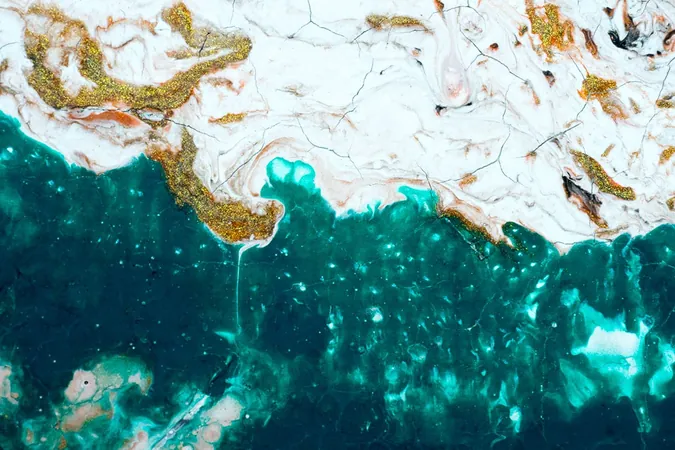
Unveiling Secrets Beneath Greenland's Glaciers: Are Rising Sea Levels About to Change?
2025-01-08
Author: William
Charting Uncharted Territory
This isn’t just another ordinary research trip; it's a sophisticated operation that deploys advanced technology and exceptional navigational prowess. The research vessel, Celtic Explorer, serves as the adventure's basecamp, while the specialized submarine, NUI (Nereid Under Ice), probes a colossal underwater cavity discovered through sonar imaging. Operating under perilous conditions that make surfacing unsafe, pilot Victor Naklicki likens the experience to “driving through a snowstorm in Buffalo, New York, while simultaneously folding origami in the back seat at 62 miles per hour.”
The Mission's Aim:
The primary focus of this expedition is the exploration of sediment mounds located at the glacier's base. These formations have remained largely unstudied due to treacherous underwater currents and nearly zero visibility caused by mud and sand. Scientists believe that these mounds could play a significant role in decelerating sea-level rise by acting as “speed bumps” that shield glaciers from the encroaching warmth of ocean waters.
Unraveling Potential Discoveries
The research team harbors ambitious goals for this venture. By venturing within 547 yards of these enigmatic sediment mounds for the first time, they aim to collect groundbreaking data that will enhance our understanding of glacier dynamics and their influence on sea levels. This information is crucial, as the melting of glaciers threatens more than a billion residents in coastal cities worldwide.
One pivotal hypothesis under investigation is whether these sediment deposits can mitigate what Professor Sean Gulick refers to as a “catastrophic retreat” of glaciers. If this theory holds water, it could lead to revolutionary ideas regarding the role of natural barriers in glacier behavior, potentially slowing their retreat.
Implications for Climate Change
The implications of this research extend far beyond academia; they could reshape our understanding of climate change and its impact on global geography. Should these sediment mounds indeed function as protective barriers, it would prompt a reevaluation of strategies to address rising sea levels.
In the event that Greenland’s ice sheet collapses, we could witness a staggering increase in sea levels—by as much as 23 feet—transforming coastlines worldwide. Professor Ginny Catania emphasizes that while some level of sea rise is unavoidable, proactive measures against coastal flooding are imperative, especially in economically disadvantaged countries that may struggle with resource allocation for adaptation.
Rising to the Challenge
This pioneering expedition underscores the urgency of addressing climate change and its consequences. As scientists delve deeper into the secrets hidden beneath Greenland’s icy façade, much work remains on the ground. Coastal communities must prioritize planning initiatives to mitigate flooding risks and protect vulnerable populations from impending disasters.
In conclusion, this mission represents a significant step forward in our battle against climate change. By unlocking the mysteries beneath Greenland’s glaciers, researchers are paving the way for innovative strategies that could safeguard future generations from the threat of rising seas. As we eagerly await more findings from this remarkable expedition, let us reflect on our role in maintaining the planet's equilibrium and consider ways to contribute to building a more resilient world for all.



 Brasil (PT)
Brasil (PT)
 Canada (EN)
Canada (EN)
 Chile (ES)
Chile (ES)
 Česko (CS)
Česko (CS)
 대한민국 (KO)
대한민국 (KO)
 España (ES)
España (ES)
 France (FR)
France (FR)
 Hong Kong (EN)
Hong Kong (EN)
 Italia (IT)
Italia (IT)
 日本 (JA)
日本 (JA)
 Magyarország (HU)
Magyarország (HU)
 Norge (NO)
Norge (NO)
 Polska (PL)
Polska (PL)
 Schweiz (DE)
Schweiz (DE)
 Singapore (EN)
Singapore (EN)
 Sverige (SV)
Sverige (SV)
 Suomi (FI)
Suomi (FI)
 Türkiye (TR)
Türkiye (TR)
 الإمارات العربية المتحدة (AR)
الإمارات العربية المتحدة (AR)